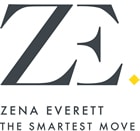LinkedIn is a critical part of your brand. An effective profile works like an interactive business card, showcasing your expertise. Like offline networking, LinkedIn is about engaging with people and sharing information to build supportive, mutually beneficial relationships. Use LinkedIn to highlight your skills and show others what you can do for them.
Here’s some ideas on how to use LinkedIn more effectively:
- Use it now. Don’t wait until you have a need – for customers, a job, or an improved network. Start building connections and relationships, regardless of whether you have internal or external career development ambitions. 25% of all employee profile views are from their co-workers so at the very least use it to impress the people around you with your qualifications, skills and expertise.
- Share. Frequently update your profile by adding articles, blog posts, presentations and other interesting content to your activity stream. Find information that is helpful to your connections and that they may wish to share with their own connections. See what they comment on or share or ‘like’ – this is feedback for you on what they think is important. Your updates should reflect your specialist interests or expertise so people ‘get’ what it is you can do for them. Avoid overt plugging. Read your network’s activity feeds and comment on them. This will help you build stronger connections. LinkedIn even provides you with relevant content to share via its powerful news aggregator, LinkedIn Today.
- Send personal invitations. Don’t send a generic un-tailored request to link – you will find people might not bother. Generic communication means that you are missing an opportunity to engage and explain why a particular individual would benefit from being connected to you. You wouldn’t give someone a business card at a networking event without some conversational preamble. It is the same principle here. Say something about what you have in common, or something complimentary. What’s in it for them to be connected to you?
- Don’t be half-baked about it. Be on it properly or not at all. There’s a reason why over 4 out of 5 UK professionals are on LinkedIn now. It works! Julia Briggs of HR recruiter Interimity says “You look unprofessional and half baked if that is what your profile looks like. It’s your profile, so you are the person responsible if it is rubbish. Not finance, not procurement, not your PA. You.” Take hours to craft your profile and get it right. A photo is essential and should reinforce your personal brand (how you want to appear to your connections). Put your contact details on there. What does Julia expect from a profile? “A little bit of sizzle please. You are selling yourself. Make me want to pick up the phone to find out more about you. And make sure your number is on there too.”
- Write with your audience in mind. Any good business communication considers who is at the receiving end. Birchwood Knight recruit corporate communications staff and their candidates are expected to have particularly high interpersonal, networking and communication skills. This should be reflected in the way they write their profiles. Wayne Reynolds, Managing Director, says “making the right first impressions with your LinkedIn profile is essential as it provides a concise, informal way for people to quickly access your skills and make a professional judgement about you.” Use LinkedIn to quickly convey your value to your target market: whether that is a prospect, customer, colleague or recruiter. Double check it. There are too many ‘mangers’ on LinkedIn already.
- Make yourself visible. Get your key words and search terms right so people can find you easily amongst the 200 million + other members. Start with the headline. No one needs an “immediately available.” You have 2,000 characters to build a strong summary and this is often the only section people read. Bullet-point your expertise in the experience section. Don’t burden the reader with lengthy paragraphs, so keep them to about five lines. Focus on achievements, benefits, results, problems you have solved. Figures, outcomes, improvements, measurements all look good. Key words will boost your chances of being found in searches.
- Use endorsements and recommendations judiciously. Networking is based on giving not receiving. Endorsements are a nice virtual pat on the back, helping your connections to show up in search results. A properly written recommendation goes a long way. Aim for the most senior recommendations you can get and avoid reciprocal recommendations.
- It is not just a recruitment tool. Mark Telford is a sole practitioner accountant in the southeast. He tracks all his business leads and reckons approximately 80% of his new business has come from LinkedIn over the past 2 years. “Without LinkedIn there is no way my business would be where it is today unless I had spent around £20,000 a year on advertising and marketing. My actual spend in these areas is less than £300 over the past 2 years. LinkedIn has only cost me time and my return on that investment has been enormous.”
Ok, I hope that’s helpful. If we aren’t connected already then please link to me at www.linkedin.com/in/zenaeverett and feel free to let me know how my own profile could be improved!
